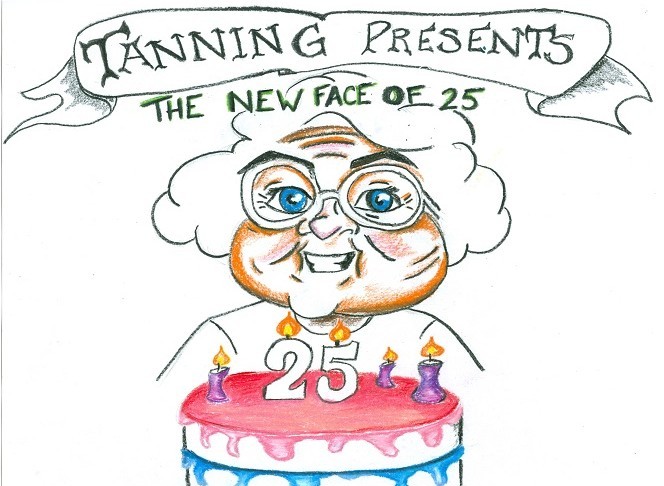To tan or not to tan: that is the question
May 18, 2015
“Research indicates that high risk exposure to ultraviolet (UV) light happens more commonly in teens and blistering sunburns and overexposure during childhood greatly increase the chances of developing skin cancer later in life.”
-National Conference of State Legislatures (NCSC)
Summer break. A glorious time in a teenager’s life.
And, as the time to break out the swimsuits and surfboards draws closer, so does the temptation to soak up the warm summer sun without using the proper amount of sunscreen.
The tanning craze, which mostly began in the 1920s, has been glorified by advertisement and celebrities and has inspired Americans to roast in the warm summer sun. But, not until more recently, has the true danger of bronze skin and sunbathing, both indoor and outdoor, been exposed to the public eye.
Whether through the influence of social factors, such as the media’s perception of beauty, or plain negligence, months of dark summer skin and lack of sunscreen are dangerous realities that can cause detrimental health repercussions for adults and teenagers alike.
Despite the perceived innocence of getting a ‘bit of sun’, research has demonstrated that most skin cancers, including melanoma, are caused by exposure to UV radiation. The American Cancer Society (ACS) estimates 76,690 new cases of melanoma in the U.S. and 9,480 deaths from the disease a year.
Furthermore, an equally alarming statistic is that those with a history of sunburn are two times more susceptible to skin cancer, according to Meta-analysis of risk factors for cutaneous melanoma.
Contrary to public option, tanning beds are not healthy alternatives to tanning outside. As highlighted in JAMA Demonology’s “International Prevalence of Indoor Tanning — A Systematic Review and Meta-Analysis,” there are more skin cancer cases due to indoor tanning than there are lung cancer cases due to smoking, and there are over 419,000 skin cancer cases that can be linked directly to indoor tanning.
Although indoor tanning appeals to all types of people, it is a particular concern for teens, as research showed that 20.9 percent of girls and 6.2 percent of boys admitted to using a tanning booth during 2011, totaling 2.5 million, despite legislation to curtail such actions.
And, if these dangerous health problems do not discourage teens from tanning, too much UV exposure can lead to premature aging, or “photo aging,” which is characterized by leathery, wrinkled skin and dark spots. Habits during adolescence, whether negative or positive, are determinants of skin health when youths inevitably age.
Many argue that sunbathing is healthy because of the sun’s release of Vitamin D. Although the sun provides Vitamin D that can be absorbed while in sunlight, there are other means of obtaining it, like through drinking orange juice.
There is also a common belief that base tans can help prevent future damage. But, according to the Center of Disease Control (CDC), they do little to protect you. In reality, even if your skin does not show signs of sunburn, prolonged exposure is still dangerous.
Instead, skincancer.org says that the safest way to protect against skin cancer and promote healthy, young skin is to limit time in direct sunlight, especially during midday. When in sunlight cover up with clothing and wear sunscreen over 15 SPF, reapplying every 30 minutes. Also, people should avoid tanning beds at all costs and routinely check for skin abnormalities and schedule regular appointments with a dermatologist.
In addition, there is a dire need for state enforcement of tanning bed restrictions for teens, as well as more legislation to prevent it.
In order to insure healthy skin and prevent against deadly skin cancer, both adults and teens must resist the temptation of the warm summer sun and heighten their awareness about the dangers of tanning.
